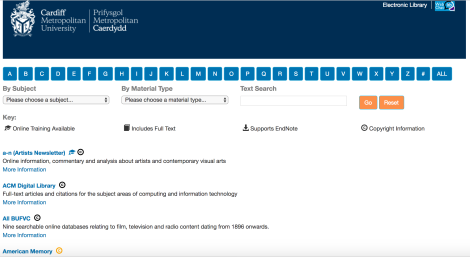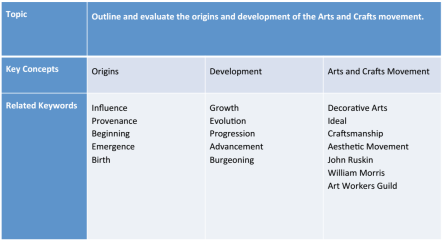Tag: copy
Image Searching, Referencing and Copyright
Today we had a talk in the library with Martha Lee, the academic librarian for CSAD, who showed us the best way to find and use images correctly within our work.
The Cardiff Metropolitan University library subscribes to and pays for a huge amount and range of databases, including image databases – so we should make the most of using them, especially since it’s our tuition fees that are paying for them.
Image Searching
The image databases can be found on MetSearch under ‘Databases A-Z‘, which takes you to a page listing all of the databases in alphabetical order. From here you can sort the databases by subject, material type and also search for certain words. Martha recommended that rather than sorting it to just ‘Graphic Design‘ in subject, that we only sort it by ‘Multimedia‘ under material type, because this is the best way of gaining the best search results.

Useful image databases for graphic design:
- Bridgeman Education
- Berg Fashion Library
- British Library Flickr Photostream
- John Johnson Collection
- National Gallery
- New York Public Library Image Collections
- Paperbacks Galore
- World Images
- Worth Global Style Network (WGSN)
- VADS
- V&A
We were taught how to use search terms. So for example, if you were doing research into Coco Chanel, some search terms to use could be: “French”, “Fashion Designer”, “Perfume”, “Little Black Dress”, “Chanel No’ 5”. A more complex example would be, if you were researching around a hypothesis, question or statement, such as your dissertation title. So for example, if your topic was to “outline and evaluate the origins and development of the Arts and Crafts movement”. The first thing you would need to do in order to create your search terms would be to highlight the key concepts.
“Outline and evaluate the origins and development of the Arts and Crafts movement.”
After you have highlighted your key concepts from your sentence, a good way of expanding your search terms is by putting the words into a table. From your key concepts, you can stretch and create related keywords – there’s nothing wrong with using a thesaurus to help you do this.

Copyright
Copyright protects the creator or owner of an image, but allows the user to make use of an image via fair dealing. Fair dealing involves asking the owner’s permission or adhering to certain conditions (known as, creative commons). Copyright sets out to:
- Acknowledge ownership of work and stop other people taking credit for it.
- Ensure owners or authors are paid for their work.
- Deter the copying of work for commercial gain or artist recognition.
It is important for designers to understand copyright. While fair dealing permits you to use a small part of other’s works of art without permission, you should still be careful and seek advice or permission if you are unsure.
What does fair dealing involve?
You can copy an image without permission for:
- Non-commercial research.
- Private study.
- Educational or teaching use (i.e. instructional purposes rather than decorative reasons).
- For criticism or review purposes.
You cannot:
- Make multiple copies of an image.
- Share images online – unless: you get permission; it explicitly allows you to; the copyright has expired; or via Creative Commons.
- Use images for commercial gain or in employment.
Google Image Search
Google is a tricky one when it comes to copyright. The easiest and best way to avoid any problems is to use the Google advanced search – under ‘Tools‘, change the ‘Usage rights‘ drop down options to ‘Labeled for reuse‘.
Referencing
Acknowledge, acknowledge, acknowledge!
You need to cite and reference any and all images that you use in your dissertations. Whether you are using an image for private study or for business, you must always give credit to the owner or author.